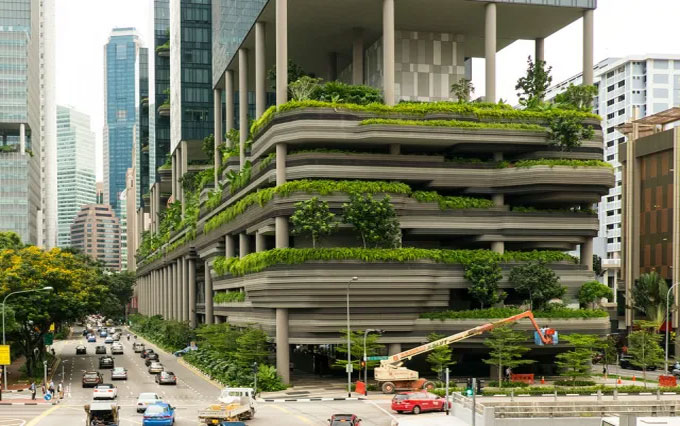
A Guide for Greener Construction

Building emissions are huge. Listed below are two reasons for building emissions:
1. Energy Emissions: Energy emissions account for 25% of all global greenhouse gas (GHG) emissions which includes CO2 that is emitted by burning fuel in buildings, it is also emitted when fossil fuels are burnt for generating electricity at power plants. GHG emissions are more explosive than CO2 emissions, even though percentage of GHG emission is low but its effect is more than that of CO2 emissions.
75% of GHG emissions is represented by CO2. Other GHGs include methane, fluorinated gases (from air conditioner leak out) and NOx compounds. The sources of energy emissions include electricity for running appliances (8% of global GHG emissions), electricity needed for cooling space (2% of global GHG emissions), electricity and fuel required for heating water (4% of global GHG emissions), electricity and fuel for heating space (8% global GHG emissions) and electricity required for lighting (3% of global emissions).
2. Embodied Emissions: It accounts for another 15% of global GHG emissions and is caused by materials used to make buildings. The major components include: the production of cement for buildings (5.5% of global GHG emissions), the production of steel and various other metals such as aluminum for buildings (3% and 1% of global GHG emissions respectively), it is also caused by the chemicals used for insulation, fireproofing, waterproofing and other building items (1% of global GHG emissions), and the remain building materials production (4.5% of global GHG emissions).
In total, 40% of global greenhouse gases emission are caused by buildings.
How to reduce emissions and its difficulties
The lesser electricity used the more energy you save. Renewable energy provides abundant, low cost, even though intermittent, clean electricity therefore it is believed widely that one of the best ways to reduce emissions is by electrifying everything. Even though this idea makes it yet we must remember that the future is tricky. Studies have shown that electricity emission is more intense than direct natural gas per unit energy emission. Therefore, in a possible future, electrified heat is worse than natural gas heat.
Building materials like cement and steel are not easily replaceable due to lack of regulations. Even if there might be a good lab data for an alternatively material yet the performance of it in the long run cannot be guaranteed. Even though people might intend to use ?green? materials in buildings yet conventional materials are mostly used.
Ways to reduce emissions
a. The best but the most difficult option is to not build any new building but to rather remodel and reuse. Minimum extraction of resources from earth is the most sustainable option.
b. Consider the global average of GHG emissions. Per person GHG emissions for the building sector is 2.8 tons of CO2 per person per year. Therefore, when a building is made, the total GHG emissions per occupant per year must be less than one-tenth of that number. If it is more than that then your project is further contributing to the existing problem.
c. Maximum occupants per square meter of a new or existing building must be promoted. In this way we can minimize construction. The architects and designers must put their thought in how to make a crowded space feel nicer and more livable for people demanding more space.
d. Avoid using energy which comes from fossil fuel. Invest in solar or geothermal lighting and heating and other non-grid and non-gas sources to cut down emissions. Electricity can only cut down emissions sometimes.
e. Try to build house using wood and other carbon negative materials such as hempwool instead of the regular polymer insulation.
f. If you feel the need for using conventional energy then use clean energy. Try to ensure that you receive clean electricity by installing on-site solar or wind power with backup storage according to requirement.

Image Courtesy: hisour.com

